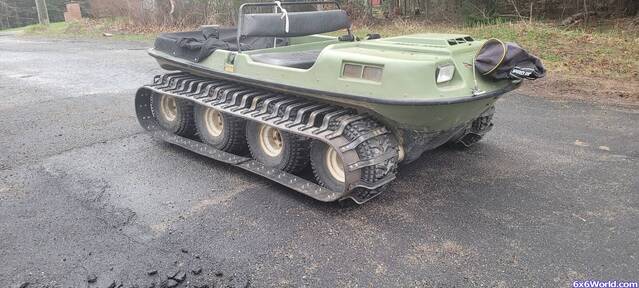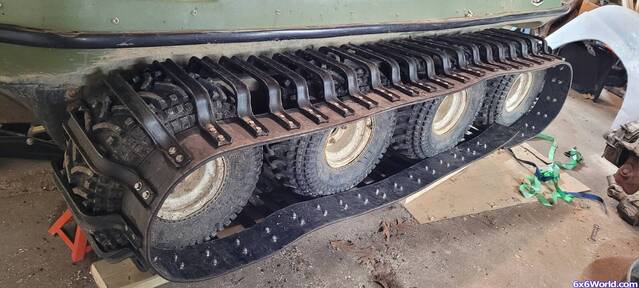For those of you who have made your own metal channel tracks before, using a jig on a hydraulic press to replicate each grouser perfectly sounds more appealing than attempting to bend each one individually on a bender. So my question to those of you who have made tracks before me is:
When making a jig, do I need to slightly overcompensate my bends to account for "rebound" of the c-channel, or is rebound not really an issue? I would be loath to spend a few hundred dollars making up a jig for the press, only to discover that the c-channel didn't quite keep the shape of the jig once removed.
I'm new to making jigs for presses, so if anyone has any words of wisdom to that end that they would like to pass along, I'm all ears. If anyone has any photos of their jigs, I'd love to see those too (or purchase them, if their for 22" tires). I'm still open to the idea of manually bending the grousers on a bender, it's just that I've found my bends and angles haven't been consistent enough for me to be happy with, plus using a press opens up the possibility of being able to replicate the tracks for friends and local Argo'ers for just the cost of materials.
When making a jig, do I need to slightly overcompensate my bends to account for "rebound" of the c-channel, or is rebound not really an issue? I would be loath to spend a few hundred dollars making up a jig for the press, only to discover that the c-channel didn't quite keep the shape of the jig once removed.
I'm new to making jigs for presses, so if anyone has any words of wisdom to that end that they would like to pass along, I'm all ears. If anyone has any photos of their jigs, I'd love to see those too (or purchase them, if their for 22" tires). I'm still open to the idea of manually bending the grousers on a bender, it's just that I've found my bends and angles haven't been consistent enough for me to be happy with, plus using a press opens up the possibility of being able to replicate the tracks for friends and local Argo'ers for just the cost of materials.




Comment